I needed to get some information about reusing profound fry oil. How frequently would you be able to reuse it until it turns sour? I recall you writing in your Wok Skills post that you can reuse oil until it becomes dim and, to some degree, effervescent.
A famous Japanese TV show revealed that a katsu made with old oil tasted better than a katsu made with new oil.
I also read that numerous tempura places utilize a blend of old and new oil, which individuals guarantee adds more flavor and shading than exclusively new oil. Figuring out How Frequently Can You Reuse Fry Oil?
How Frequently Can You Reuse Fry Oil?
You can reuse fry oil a few times if you’ve taken proper care of it. However, it’s essential to use your judgment and sensory evaluation to decide when it’s time to replace the oil. If you notice a decline in the quality of your fried foods or any signs of spoilage in the oil, it’s safer to dispose of it and start with fresh oil for your next frying session.
The frequency with which you can reuse fry oil depends on several factors, including the type of oil, the foods you’ve fried, and how you’ve maintained and filtered the oil. Here are some general guidelines for reusing fry oil:
Type of Oil
Different oils have different smoke points and stability levels. Generally, oils with higher smoke points like vegetable, peanut, or canola oil tend to be more suitable for reuse than oils with lower smoke points. Olive oil, for example, has a lower smoke point and is less suitable for multiple uses.
Frying Temperature
High frying temperatures can break down the oil more quickly.
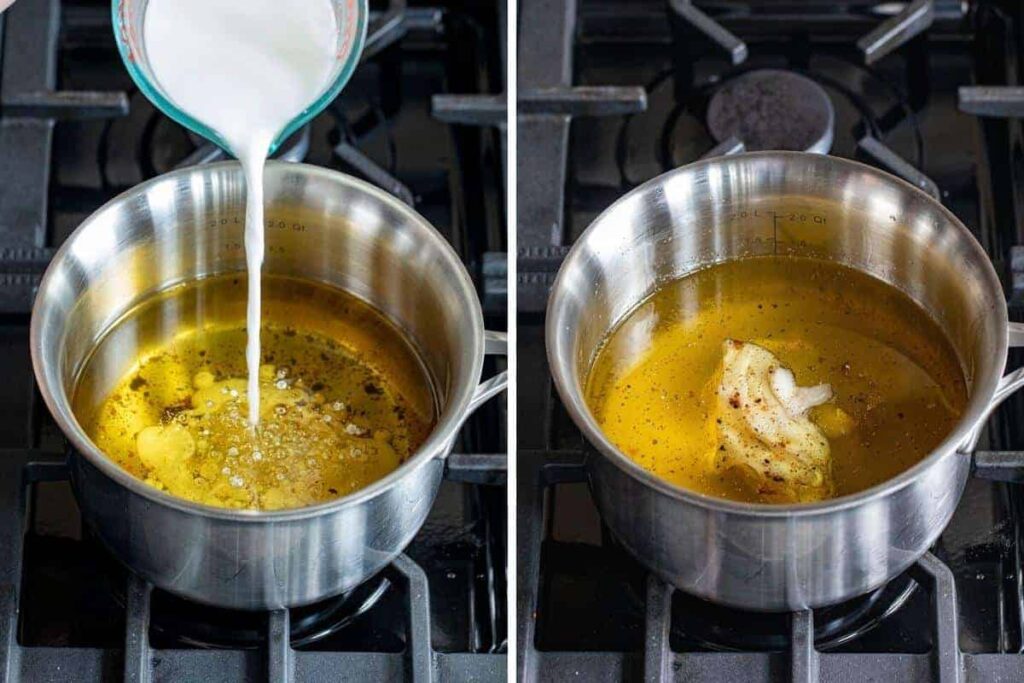
Reusing oil at lower temperatures or for shorter frying durations can extend its usable life.
Filtration
Properly filtering the oil between uses can help remove food particles and impurities that can accelerate oil breakdown. Use a fine-mesh sieve or a specialized oil filtration system.
Storage
Store used fry oil in a cool, dark place to slow down oxidation and rancidity. Use an airtight container to prevent exposure to air.
Food Contamination
The type of food you fry can impact how often you can reuse the oil. Foods that release a lot of moisture, such as battered foods, can break down the oil more quickly.
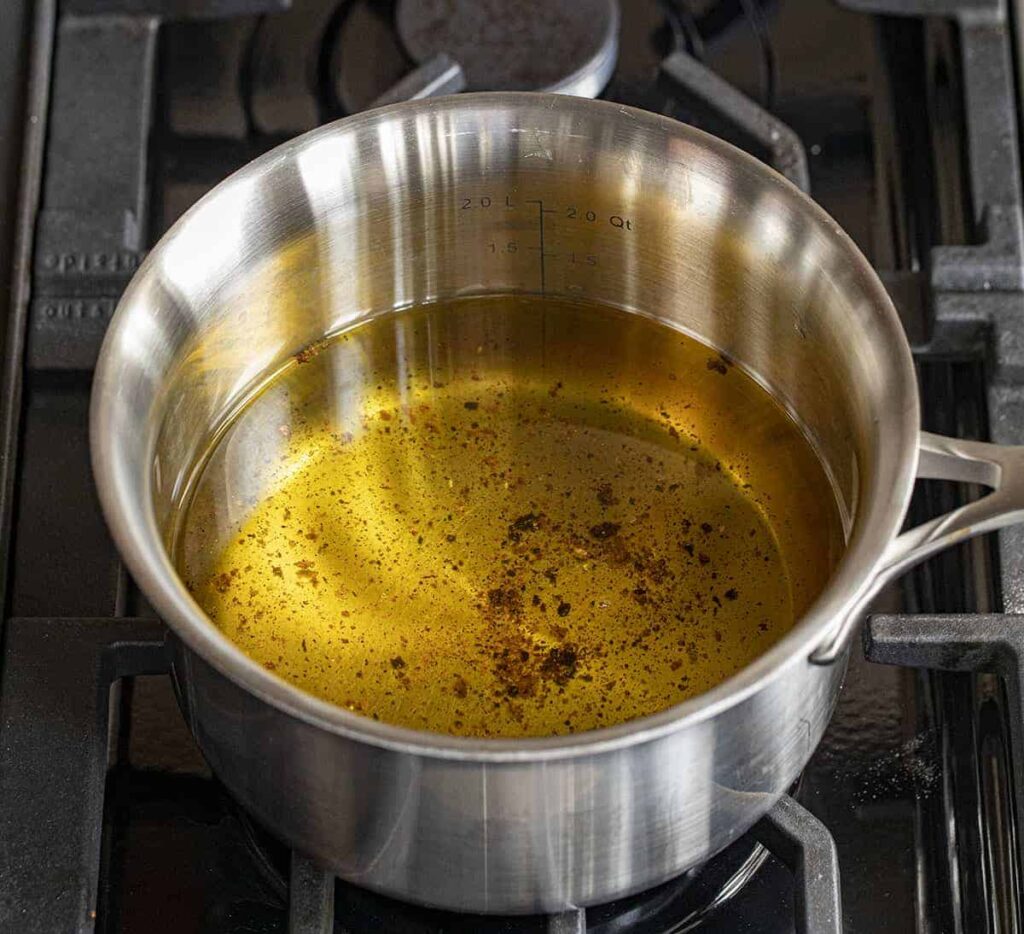
Sensory Evaluation
The best way to determine if fry oil is still usable is through sensory evaluation. If the oil has an off smell, or unusual color, or has become thick and sticky, it’s time to discard it.
Things That Will Ruin Your Oil
The elements that will influence the times you reuse oil are:
1. The Type of Frying Vessel
Broiling at home will demolish your oil quicker than searing at an eatery. Why? It has to do with the warming game plan. In a committed cafe profound fryer, the warming components are raised over the lower part of the oil chamber.
As little pieces of flotsam and jetsam tumble off the seared food varieties, they sink to the lower part of the chamber, where they rest under those warming components.
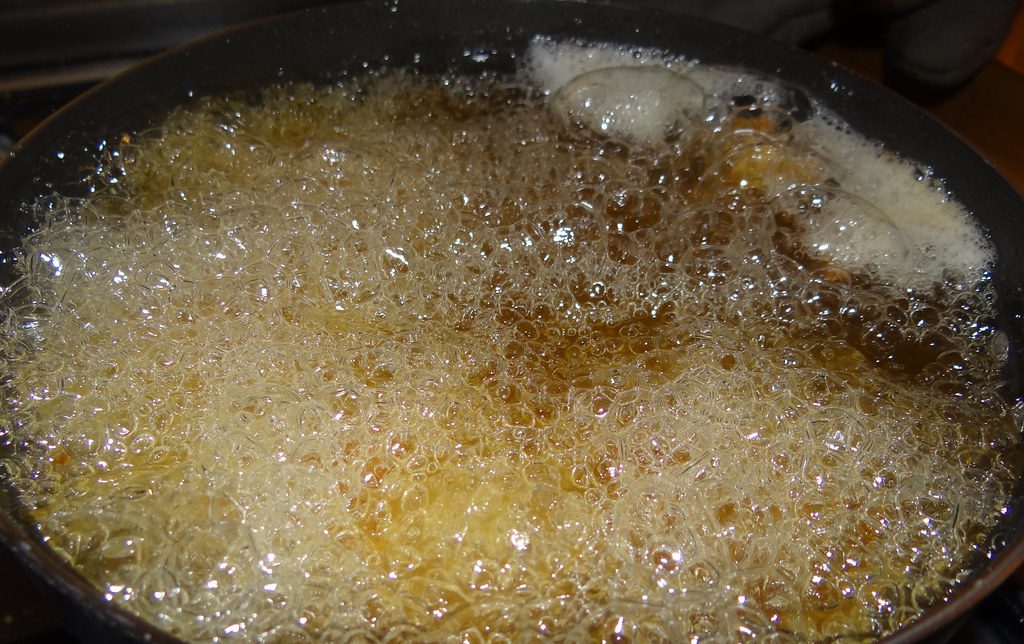
With a home arrangement, you wind up browning in a pot or a wok put over a burner.
Particles of food tumble to the lower part of the dish, coming in direct contact with a hotness source and consuming, conferring their flavor to the oil and rushing its breakdown.
Tragically, there’s only a straightforward method for avoiding this, except if you buy a committed electric fryer for your home kitchen. Assuming you fry a ton, this is anything but a poorly conceived notion.
2. The Type of Coating
The more particulate matter you acquire with oil and the better those particles, the quicker your oil will break down. Battered varieties like onion rings or uncovered food sources like French fries will leave almost no debris after searing.
Breaded food varieties like chicken cutlets will leave pieces that tumble off when the food is added to the oil. Furthermore, food sources dug in flour like these Fried Fish Sandwiches will present massive particles.
3. The Type of Food Is Fried
With battered and breaded food sources, what’s inside doesn’t make any difference in all that amount as it doesn’t come into direct contact with the oil. However, for food sources that are seared uncovered, the sort of food can influence the general nature of the oil.
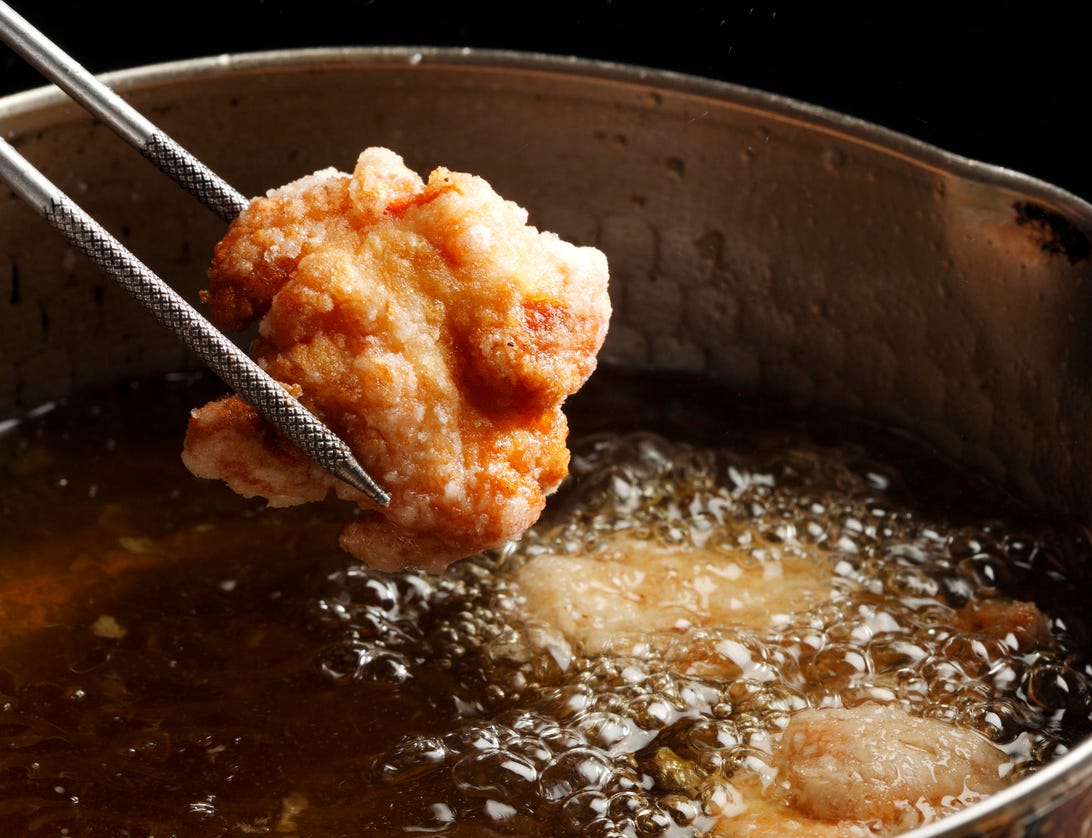
Vegetables will more often than not dry the cleanest, bestowing very little to the oil. Then again, greasy meats like chicken wings or bacon will deliver fat as they cook. This fat can blend in with your fryer oil, more quickly separating it.
4. The Type of Oil and the Temperature
Various oils have various cosmetics regarding their general degrees of saturated and unsaturated fats and different solids. This can influence how they fry and the temperatures to which they can be warm.
By and large, refined oils like general nut, canola, vegetable, and corn can be friendly to higher temperatures than crude oils like extra-virgin olive oil or most sesame oil. It isn’t so much that you can’t sear in extra-virgin olive oil; it’s simply that it will separate far quicker than a refined oil-assuming it could get sufficiently hot to broil without smoking.
The best oils for searing will generally be those high in saturated fats, like nut oil, vegetable shortening, or grease. They’ll have the longest life expectancy; however, they’ll likewise deliver the crispest outcomes.
5. Capacity
Oil can separate even without the energy of a burner under it. Moistness, light, and hotness are its biggest adversaries. All of you have somewhere around one companion who stores their oil right over the oven or, in any event, sitting in a container against the backsplash.
They are no-decent, grimy spoiled oil executioners, and I encourage you to de-companion them immediately. Oils- even those that have been utilized a couple of times- should be kept in firmly fixed compartments in an excellent, dim spot.
What is the Most Effective Method to Clean Oil?
So you’ve cooked off that group of fries; you need to store the oil for some time later. How would you do that?
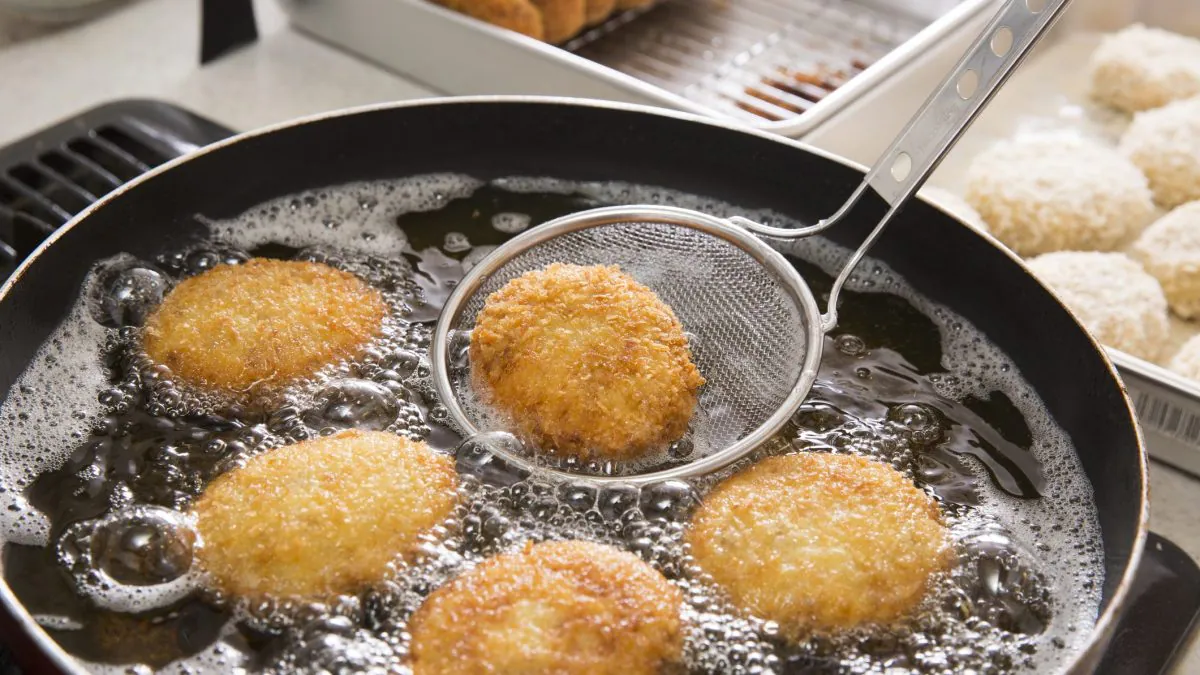
Begin by utilizing a skimmer to skim off any floaters and vast bits of trash hiding in the pot and dispose of them. Then, pour the oil into a perfect, dry pot through a fine lattice sifter.
If you were cooking flour-dug food sources, you might track down an enormous layer of grimy, flour-filled oil at the lower part of the pot.
Quit pouring before you pour this stuff through and dispose of it independently. Cover the pot with the stressed oil to keep dust from falling, and let it cool.
At last, utilize a channel to empty the oil maneuver into its unique compartment (you did save it, right?). Seal it firmly, and store the oil in an excellent, dry spot.
Update: If you have some gelatin available, you can try this gelatin-explanation strategy. It has precisely the intended effect and gives you apparent oil for now.
How to Increase the Lifespan of Oil
Increasing the lifespan of oil, especially cooking oil, is both cost-effective and eco-friendly. To extend the shelf life and maintain the quality of your oil, it’s essential to store it correctly.
Begin by ensuring that the oil is kept in a cool, dark place, away from direct sunlight and heat, as these can accelerate its degradation.
Using airtight containers can prevent exposure to air, which can cause rancidity. If you’re reusing oil, strain out any food particles, as they can cause the oil to spoil faster. It’s also crucial to avoid introducing moisture into the oil, so always use dry utensils when handling it.
Lastly, consider rotating your oils and using older batches first, ensuring that the oil doesn’t remain stagnant for too long. By taking these measures, you can effectively prolong the lifespan of your oil, ensuring that it remains fresh and maintains its nutritional properties.
FAQs
How do I store fry oil for reuse?
After using fry oil, allow it to cool completely, then strain it through a fine-mesh sieve or cheesecloth to remove any food particles. Store the oil in a clean, airtight container in a cool, dark place until you’re ready to use it again.
How do I know when to discard the frying oil?
If the oil starts to smell rancid, look cloudy or foamy, or develop an off flavor, it’s time to discard it. Additionally, if the oil has been used for frying raw meat or fish, it’s best to discard it after one use to avoid the risk of bacterial contamination.
Can I mix different types of oils when reusing fry oil?
It’s not recommended to mix different types of oils when reusing fry oil. Stick to the same type of oil for each use to avoid any unwanted flavors or reactions.
How can I extend the life of fry oil?
To extend the life of fry oil, avoid overheating it, and don’t mix it with water or wet ingredients. Additionally, adding a small amount of fresh oil to the used oil can help refresh the flavor and quality.
Can I reuse the frying oil used to fry gluten-containing foods?
If you have a gluten intolerance or allergy, avoiding reusing fry oil used to fry gluten-containing foods is best. Even if you strain the oil, tiny gluten particles may remain and cause a reaction. It’s best to use fresh oil for gluten-free frying.
Ending Lines
Even with this multitude of tips. There are an insane number of factors out there that can influence your oil. Your faculties are your most intelligent choice for knowing when to throw the oil and when to reuse it. Is it frothy? Does it smell foul? Ditch it. In any case, simply strain and store, and you’re all set for the following cook. This is how Frequently you can reuse fry oil.

Comments are closed.